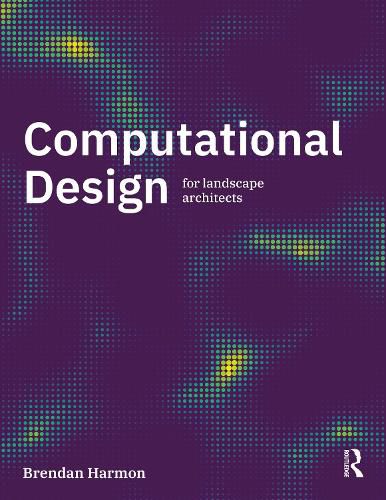Readings Newsletter
Become a Readings Member to make your shopping experience even easier.
Sign in or sign up for free!
You’re not far away from qualifying for FREE standard shipping within Australia
You’ve qualified for FREE standard shipping within Australia
The cart is loading…






This book is a guide to computational design for landscape architects replete with extensive tutorials. It introduces algorithmic approaches for modeling and designing landscapes. The aim of this book is to use algorithms to understand and design landscape as a generative system, i.e. to harness the processes that shape landscape to generate new forms. An algorithmic approach to design is gently introduced through visual programming with Grasshopper, before more advanced methods are taught in Python, a high-level programming language. Topics covered include parametric design, randomness and noise, waves and attractors, lidar, drone photogrammetry, point cloud modeling, terrain modeling, earthworks, digital fabrication, and more. The chapters include sections on theory, methods, and either visual programming or scripting. Online resources for the book include code and datasets so that readers can easily follow along and try out the methods presented. This book is a much-needed guide, both theoretical and practical, on computational design for students, educators, and practitioners of landscape architecture.
$9.00 standard shipping within Australia
FREE standard shipping within Australia for orders over $100.00
Express & International shipping calculated at checkout
This book is a guide to computational design for landscape architects replete with extensive tutorials. It introduces algorithmic approaches for modeling and designing landscapes. The aim of this book is to use algorithms to understand and design landscape as a generative system, i.e. to harness the processes that shape landscape to generate new forms. An algorithmic approach to design is gently introduced through visual programming with Grasshopper, before more advanced methods are taught in Python, a high-level programming language. Topics covered include parametric design, randomness and noise, waves and attractors, lidar, drone photogrammetry, point cloud modeling, terrain modeling, earthworks, digital fabrication, and more. The chapters include sections on theory, methods, and either visual programming or scripting. Online resources for the book include code and datasets so that readers can easily follow along and try out the methods presented. This book is a much-needed guide, both theoretical and practical, on computational design for students, educators, and practitioners of landscape architecture.